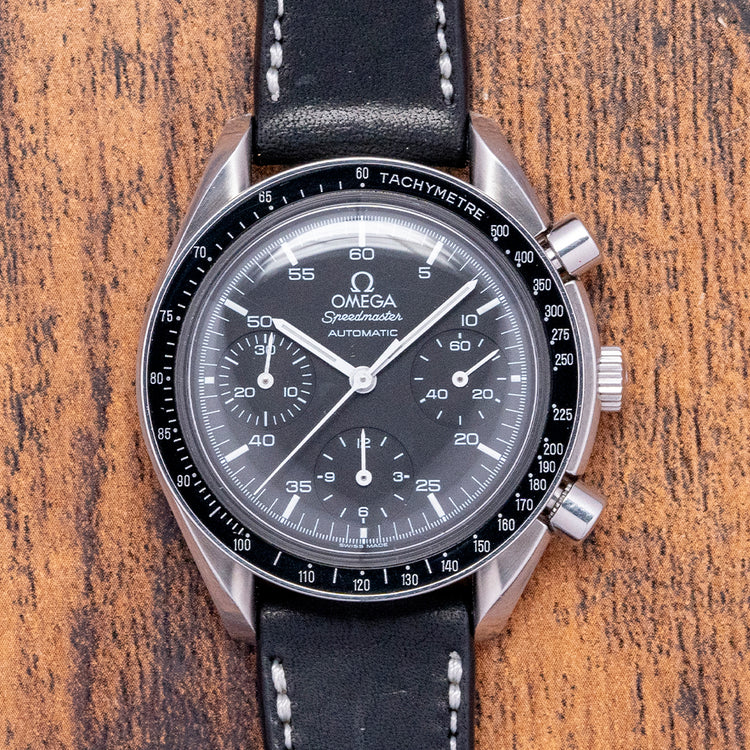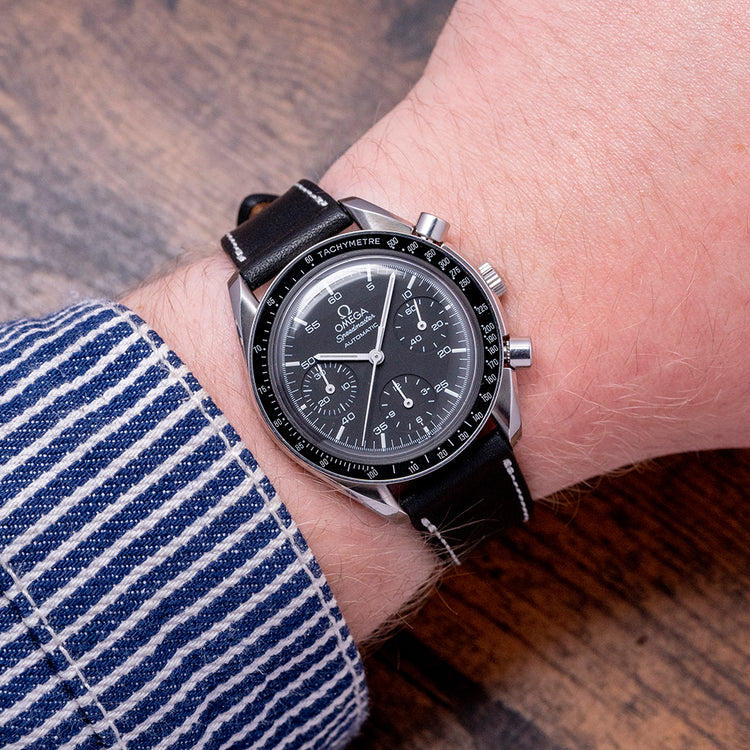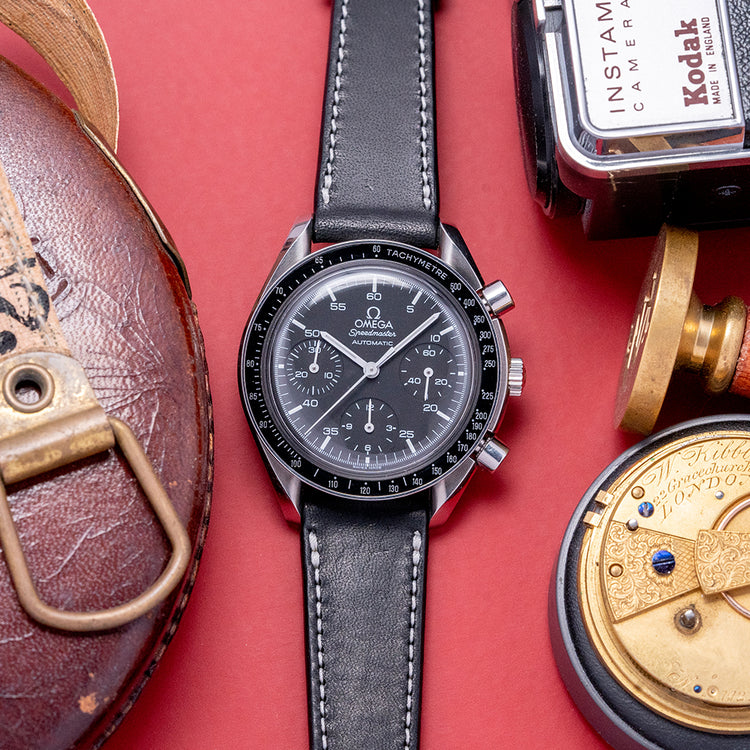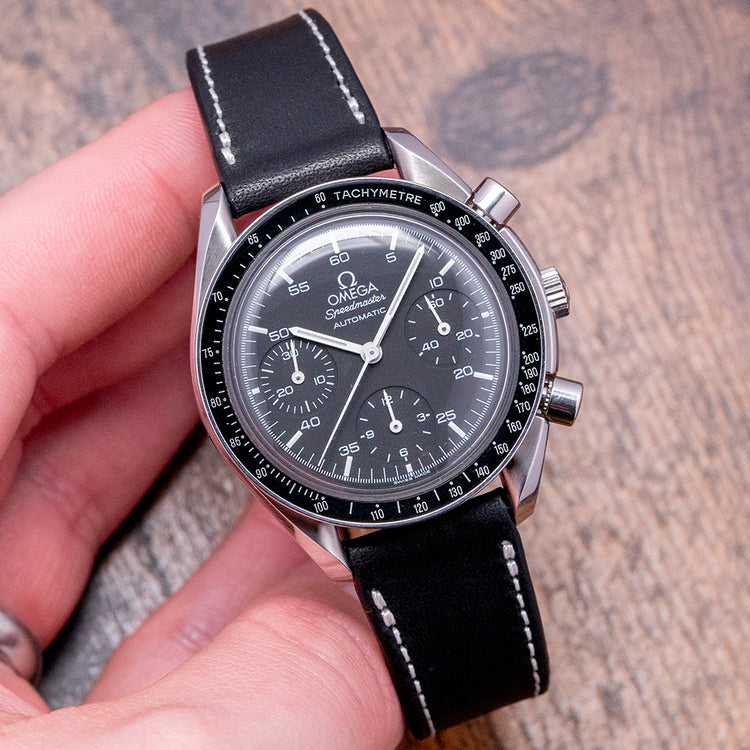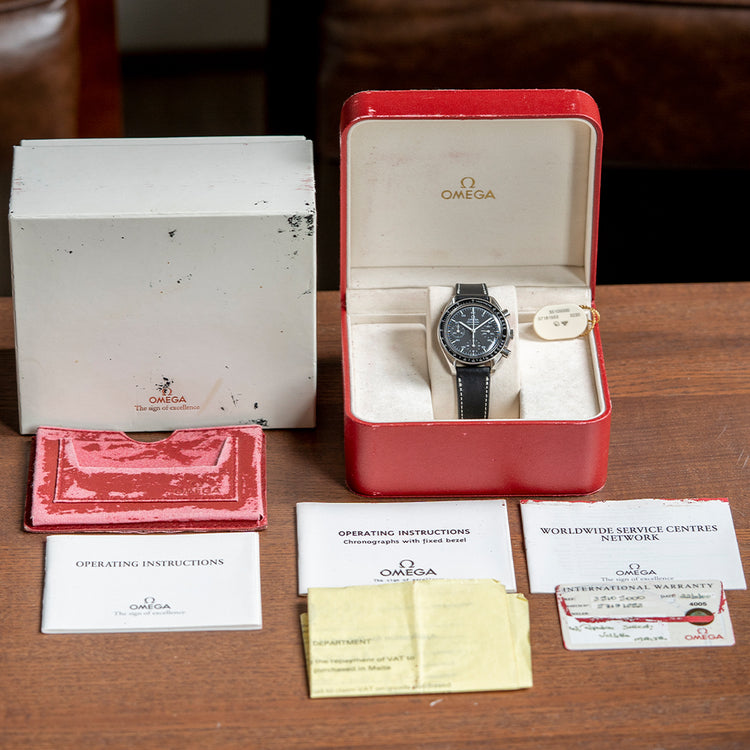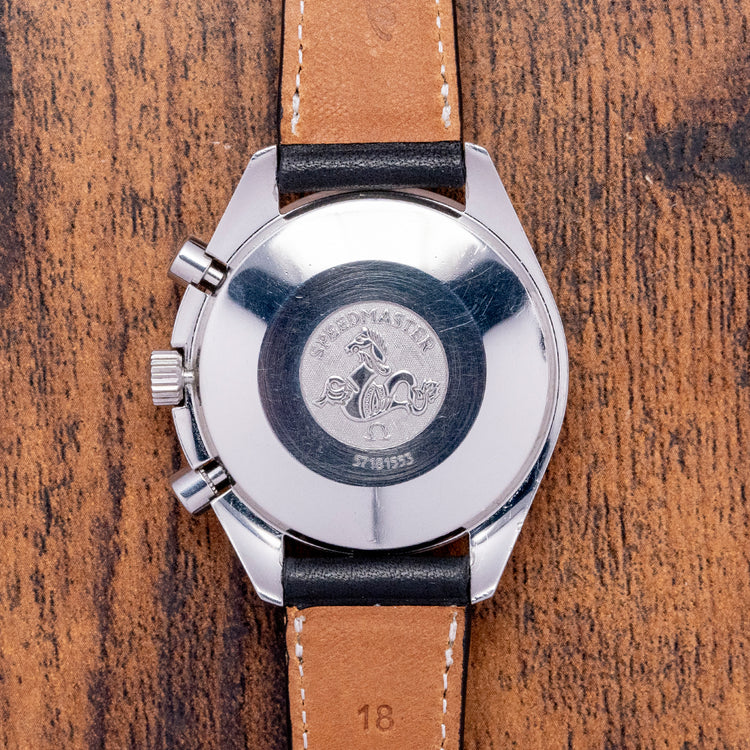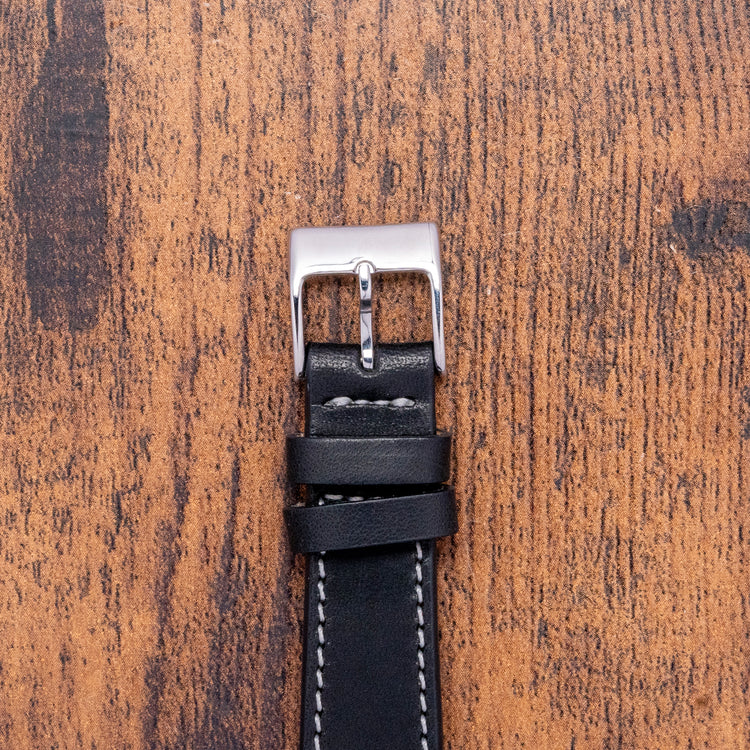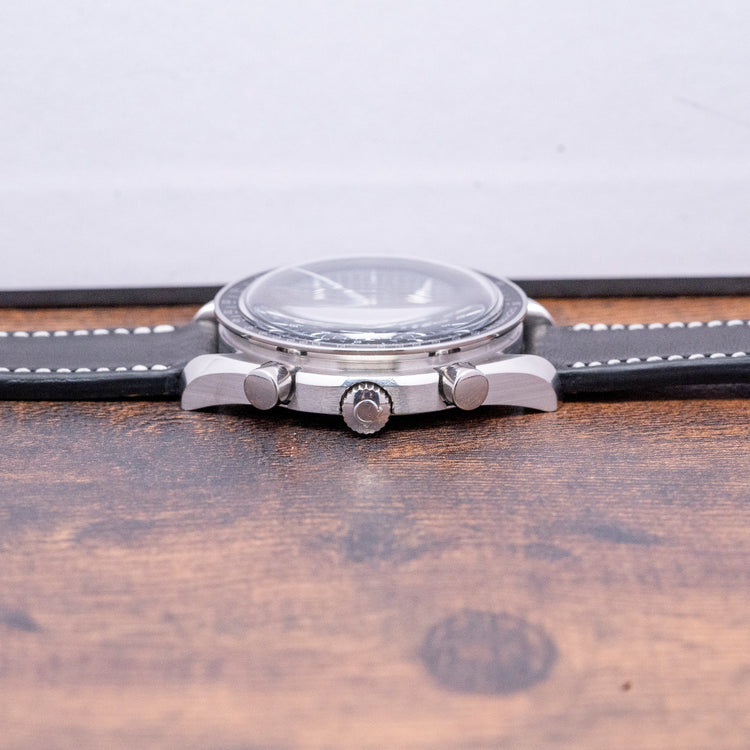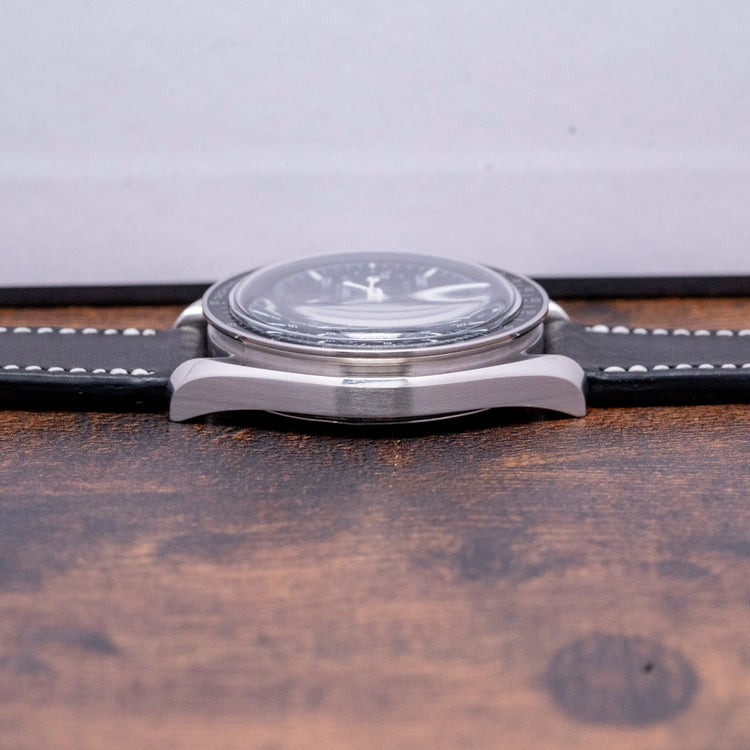More Information
Description
More
Less
Here we have a 2000 Omega Speedmaster Reduced/Automatic 3510.50.00, which has a 39mm stainless steel case with polished and brushed surfaces that lead the eye to the characteristic twisted lugs, the crisp lines transition effortlessly around the case, and a lug-to-lug length of 44.5mm and a thickness of 11.5mm ensures a comfortable fit on the wrist. On the right side, you find the chronograph pushers and a crown that sits slightly lower than the pushers due to the movement. A fixed tachymeter sits on its black bezel. The dial is protected by a domed Hesalite crystal and an outer minute track with slim baton indexes marking the hours, the inclusion of a 60-minute scale stems back to its racing heritage. Three slightly recessed Sub-dials, small seconds, 12 hours, and 30 minutes, are significantly spaced out, and the running seconds are on the opposite side compared to its larger brother, the 42mm Speedmaster Professional. Sword hands and an elegant long central chronograph second hand. Hands and indexes are lumed with Super-Luminova. At 12 o’clock, the logo and text are precisely printed, and instead of “Professional”, Omega has replaced it with “Automatic”. On the reverse, with a snap on case back, in the centre, we have the embossed Hippocampus along with Speedmaster, inside an automatic Omega Cal. 3220, 47 jewels, 28,800 beats per hour, the movement is based on an ETA 2890-A2 calibre, with a Dubois-Dépraz 2020 chronograph module stacked on top. It comes paired with its 18mm well-suited aftermarket leather strap and pin buckle and comes with its Omega presentation box and paperwork.
Points of Mention
More
Less
Personal Note
More
Less
Specification
More
Less
Movement : Automatic Omega Cal. 3220
Age : November 2000
Year : 2000
Case Size : 39mm
Case Thickness : 11.5mm
Lug to Lug : 44.5mm
Lugs : 18mm
Condition : Pre-Owned
Box and Papers : Box & Papers
Case Material : Stainless Steel
Warranty : 12-Months NON-Waterproof Warranty
The wrist model's wrist size is 7inch
About Omega
More
Less
Description
Here we have a 2000 Omega Speedmaster Reduced/Automatic 3510.50.00, which has a 39mm stainless steel case with polished and brushed surfaces that lead the eye to the characteristic twisted lugs, the crisp lines transition effortlessly around the case, and a lug-to-lug length of 44.5mm and a thickness of 11.5mm ensures a comfortable fit on the wrist. On the right side, you find the chronograph pushers and a crown that sits slightly lower than the pushers due to the movement. A fixed tachymeter sits on its black bezel. The dial is protected by a domed Hesalite crystal and an outer minute track with slim baton indexes marking the hours, the inclusion of a 60-minute scale stems back to its racing heritage. Three slightly recessed Sub-dials, small seconds, 12 hours, and 30 minutes, are significantly spaced out, and the running seconds are on the opposite side compared to its larger brother, the 42mm Speedmaster Professional. Sword hands and an elegant long central chronograph second hand. Hands and indexes are lumed with Super-Luminova. At 12 o’clock, the logo and text are precisely printed, and instead of “Professional”, Omega has replaced it with “Automatic”. On the reverse, with a snap on case back, in the centre, we have the embossed Hippocampus along with Speedmaster, inside an automatic Omega Cal. 3220, 47 jewels, 28,800 beats per hour, the movement is based on an ETA 2890-A2 calibre, with a Dubois-Dépraz 2020 chronograph module stacked on top. It comes paired with its 18mm well-suited aftermarket leather strap and pin buckle and comes with its Omega presentation box and paperwork.
Points of Mention
Personal Note
Specification
The Brand
Enquire or Book an Appointment
Would you like to discover further details about this watch, or perhaps arrange an appointment to view and try it on? Complete this form and a member of our team will get back to you shortly.
You May Also Like




















